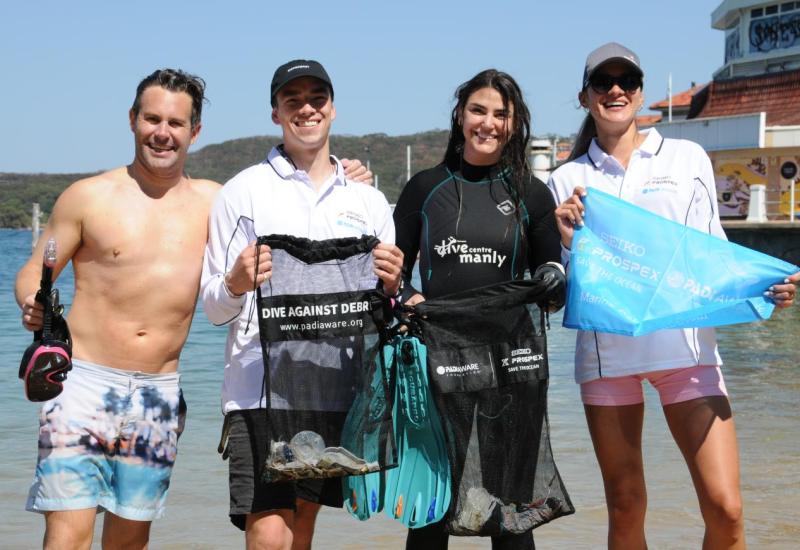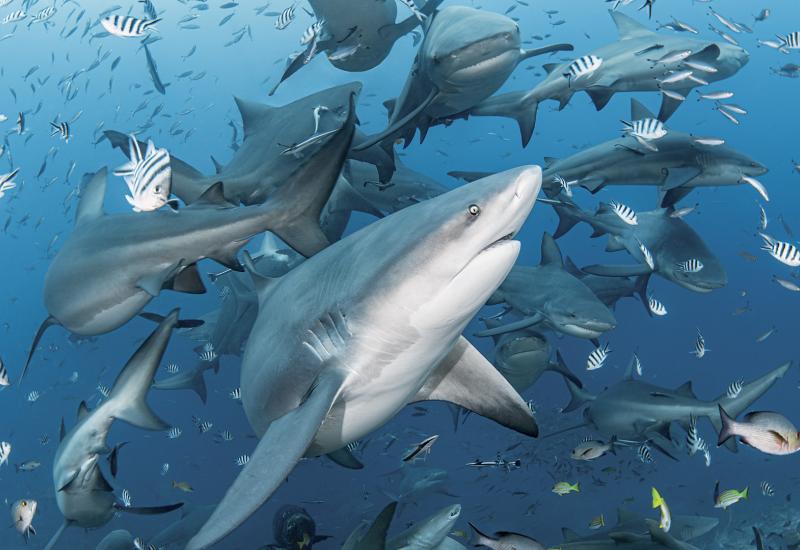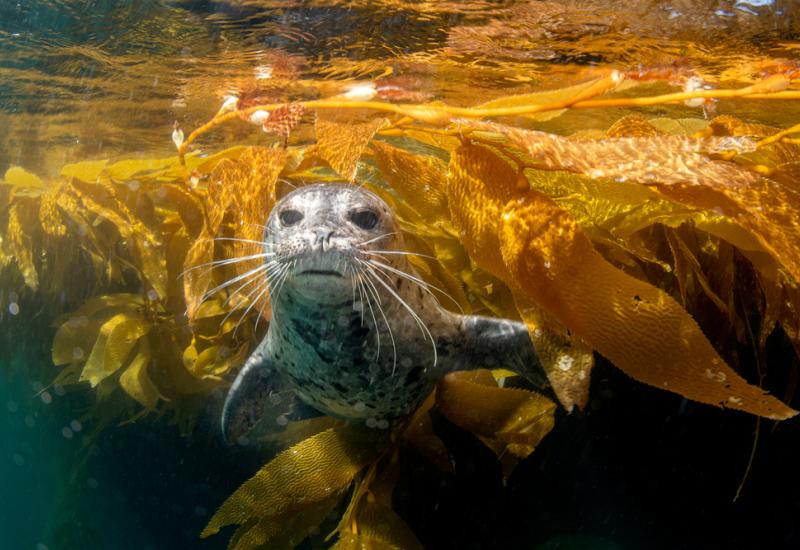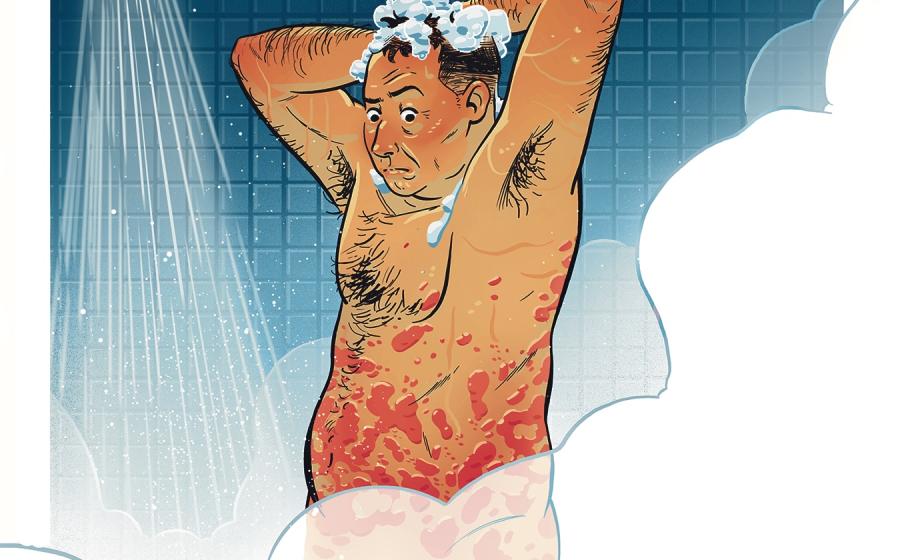A Scuba Diver's Guide to the Peculiar Side of Palau
The water is saturated blue, and a steady current is pushing me farther away from the reef. I have lost sight of my group. Surrounding me are thousands of excited, rapidly swimming bumphead parrotfish. Pillars of spawning fish erupt all around me as I whip my camera around, trying to capture the explosions of new life. As I take in the mind-blowing spectacle, I have half-forgotten the 24-hour trek I made to get to this moment. Also mostly forgotten is the painfully early start we made — long before sunrise — to coordinate our time in the water with the bumpheads’ mating frenzy. I feel incredibly lucky; nowhere else in the world can recreational divers see Bolbometopon muricatum spawning aggregations with as much predictability as in Palau.

Alex MustardThe Aichi E13A long-range reconnaissance seaplane — its Allied reporting name was “Jake” — was used by the Imperial Japanese navy during WWII. One of Palau’s signature sites, the Jake Seaplane is in 45 feet of water off Koror.
CLOSE ENCOUNTERS OF THE BUMPHEAD KIND
Just a couple of hours earlier, I had begun my morning while the sun was still below the horizon. At the jetty, I make out a hive of activity around Sam’s Tours Blue Shark. Several rebreathers, DSLR setups and a massive Gates housing are being hauled on board. The gear belongs to Sam’s Unique Diving Expedition (UDE) team, a group of specialists who lead several uncommon dive experiences, including viewing the spawning of bumphead parrotfish. While these fish mate in other parts of the Pacific Ocean, in Palau’s waters, they aggregate by the hundreds — sometimes thousands.
Reef fish often reproduce in group mating events during specific moon phases, when currents are guaranteed to sweep their eggs into open ocean. The Palau Trench — nearly 30,000 feet deep — is a trusty launch pad; in addition to the bumpheads, sailfin snapper and red snapper come to Palau to mate. Adding to the excitement are the sharks that crash the party.
In 2007, Paul Collins, a pro videographer with a master’s degree in marine science, arrived on Palau. Local dive operators were taking guests to witness various spawning aggregations, but Collins and photographer Richard Barnden began compiling a meticulous database of locations, dates and activities.
“By 2011, we had recorded lots of spawning aggregations, but we still couldn’t predict the behavior well enough,” Collins recalls. “UDE was created so the team could focus on developing a real understanding of these fish superevents. After years of exploratory dives, we’ve now identified spawning aggregations of various reef fish, including bumphead parrotfish.”
Resident spawning aggregations — those that always occur in the same spot, and in the same way — are easier to document, especially when, like the bumpheads, they take place every month. Transient spawning aggregations take longer to establish a scientific record. The sailfin snapper aggregation, which happens only twice a year, took four years, while some unpredictable spawning aggregations such as the Moorish idol are still not fully understood, despite years of tedious observations.

Alex Mustard (left); Greg LecoeurLeft: Running under the island of Ngarol, Chandelier Cave is a dazzling fantasyland of stalactites formed over eons by rainwater seeping through the island’s limestone. Right: Catch the action at Blue Corner, which attracts huge schools of fish such as these bigeye trevally.
The first event UDE offered was the bumphead parrotfish spawning aggregation. “It took us two years to nail down the exact time,” Collins says. “Finding the location of a resident event is the easiest part. Predicting the exact time and behavior of the fish is where the extensive fieldwork comes in.
“The fish aggregate on the reef early in the morning, and the trick is to jump in at the right moment,” Collins says. “Divemasters will pop their heads in the water to check on the growing shoal. We know exactly when to get in the water.”
You also have to be prepared to move quickly. On my dive, our divemaster gives the command, “OK, guys, let’s go!” and we immediately back-roll into the water. I look down on a ginormous cloud of hundreds — no, thousands — of bumpheads. Like a massive shoal of supersize sardines, they swim rapidly to and fro. Add to this that bumphead parrotfish are big; they grow to nearly 5 feet in length and can weigh up to 100 pounds.
When a bumphead’s face color transitions to white, it is signaling it’s ready to mate. Once a female and male have found each other, they initiate the spawn by rising cheek to cheek toward the surface. Immediately other males try to get in on the action, forming groups of up to 15 fish. The group spirals upward in a frenzy before separating suddenly, releasing a cloud of sperm and eggs that the current will transport to sea. For about 45 wild minutes, vertical columns of bumpheads release sperm and eggs.
Amid the chaos, the dive group has dispersed and I am alone. Having finned like a madman, I am low on air and exhausted. Looking down, I see a big shadow gliding through the throng of fish: a bull shark! In a burst of power, it charges a mating group but then retreats. Even for sharks, these beaked fish can be dangerous. The shark comes around a second time, dispersing the fish and herding them deeper. With little air left in my tank, I can’t follow, losing sight of the attack.
And then as quickly as it began, the encounter is over. Less than an hour after the mating frenzy started, the bumpheads disappear.
After a mass orgy like this, gigantic clouds of fertilized eggs get carried away in the currents, which offer them a bit of protection from predators. The larval juveniles float in the ocean until they reach a size that allows them to return to the reef. As camouflage, most larval reef fish remain transparent and are impossible to see during the day. But at night, there is a way to see and photograph them.
THE TWILIGHT ZONE
Every night, the largest migration of ocean animals occurs when the biomass of the mesopelagic zone climbs vertically toward the surface. Black-water diving is a trend that began in Hawaii, and it has proved an exciting addition to the dive slate in Palau, which offers perfect conditions: remarkably deep and crystal-clear waters.
Slowly we descend along tether lines attached to Blue Shark. Underwater, the pitch-black darkness of the ocean is illuminated by powerful video lights suspended under the boat in a trapeze. The light attracts transparent larval fish and cephalopods, along with shrimp, jellyfish, baby anemone corals and other unidentifiable organisms. Schools of hunting squid complete the surreal scene.
“You never know what you are going to get,” Collins says. For first-time black-water divers, most animals are novel and mysterious. My heart skips a beat when the divemaster points out what looks like a 30-foot-long sea snake. As I approach carefully, I realize it’s a chain of tunicates, or sea squirts, that has formed a colony; each individual has a different role and responsibility.

Simon Lorenz (left); Ethan DanielsLeft: The Instagram-worthy Rock Islands — known locally as Chelbacheb — is actually made up of the tips of ancient reefs that dot Palau’s Southern Lagoon. Right: A jellyfish makes an appearance during a black-water night dive in the Palau Trench.
Many larval-stage fish are completely transparent, revealing spines and intestines. Tiny crustaceans paddle around, filtering out organisms attracted by the lights, while larval squid and octopuses often hover motionless in the water waiting for an opportunity to seize food.
Divers can remain tethered and wait for the creatures to swim past, but underwater photographers usually unhook. Attention is required; it’s easy to lose track of depth. While following a juvenile flying gurnard, I’m suddenly stopped by the beeping of my dive computer’s depth alarm. I’ve drifted into the black abyss and need to swim back to the illuminated dive zone under the boat.
Driving back over dark, flat waters, we reflect on the amazing experiences of this day. We’ve witnessed the courtship and mating of thousands of fish in a sapphire-blue ocean, and seen bizarre, delicate sea creatures over a pitch-black abyss. Those are just two of the special experiences possible in a remarkable dive destination.
Professional underwater photographer Simon Lorenz runs Insider Divers, which offers specialized itineraries and underwater-photography workshops. His photographs and articles have appeared in a number of publications, and he is a member of the advisory board of the Hong Kong Shark Foundation, which works to end shark finning.
DIVE PALAU
Dive Operators: Sam’s Tours
Liveaboards: Palau Aggressor II and Rock Islands Aggressor











